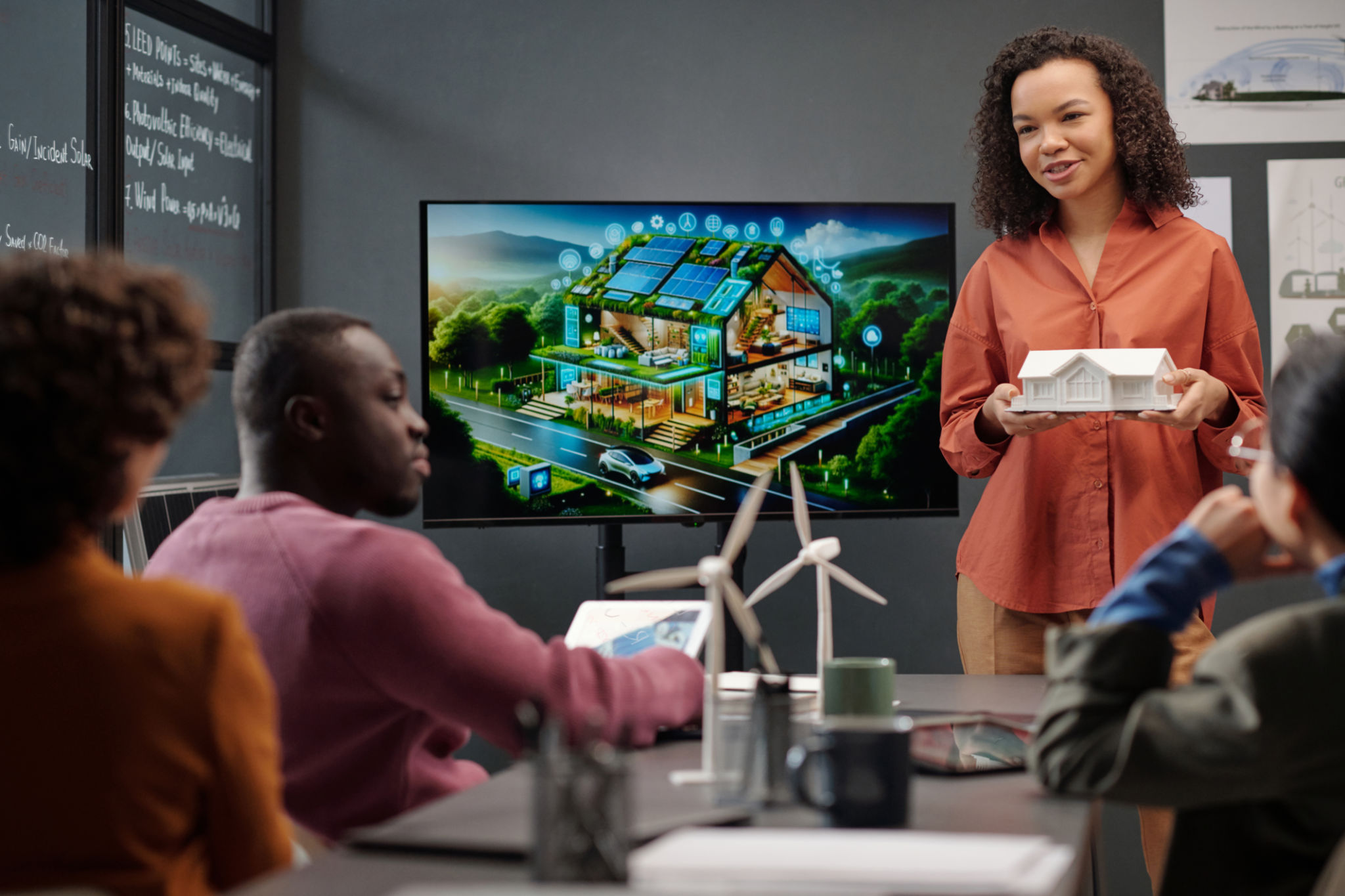Facing the Challenge: How Climate Change is Shaping Architectural Innovation in South Africa
The increasingly dire impacts of climate change have made it so that South Africa, architects, and builders are continually called upon to rethink design principles and construction practices to meet changing climatic conditions. This revisionist process is not only reactive but forms one of the many ways for innovation and sustainability toward greener and resilient structures. We take a closer look in this blog at how climate change is increasingly changing architectural practices in South Africa, outlining some of the major trends, strategies, and projects that are exemplary in this transformation.
Understanding the Response of Climate Change towards South African Architecture
From the arid Karoo to temperate coastal areas, each climate region in South Africa brings its set of demands on architecture. With the alarming rate at which the area encounters such severe weather as floods, droughts, and heat waves, it goes beyond just being necessary for designs that can withstand such stresses. To this end, it forces architects to bring into focus functionality and sustainability rather than aesthetics.
Emphasizing the Use of Sustainable Materials/Techniques
One of the most significant shifts in architecture is the movement towards sustainable building materials. Eco-friendly materials, such as reclaimed wood, recycled metals, and low-impact concrete alternatives, are gaining traction. The use of local materials not only reduces transportation emissions but also integrates the building more harmoniously into its surroundings.
A remarkable example of innovative construction is the recently completed earth rammed walls at the Woman’s Living Heritage Monument in the City of Tshwane. This project boasts the country’s largest earth rammed wall, consisting of four walls that each span three storeys high. Earth rammed walls, made from a mixture of damp soils and stabilizers, draw on ancient building methods that are revisited for their sustainable qualities.
The project faced challenges related to the regulation of design and construction methods, as there is currently no governing document for earth rammed wall construction in South Africa. To meet acceptable standards, Themba, the project team, had to develop their own specifications covering design, material selection, construction, and maintenance. Close collaboration with contractors and architects ensured the walls met expectations. Given the substantial volume of soil required, careful material selection was vital for achieving the desired results. The final aesthetics of the walls relied heavily on the consistent material properties, which were assessed through the construction of “miniature” versions on-site.

What is Design for Energy Efficiency?
Nowadays, architects focus on energy-efficient designs by exploiting renewable resources. It is very common for new builds to feature solar panels, green roofs, and rainwater harvesting systems. Probably the best example of the integration of energy-efficient technologies into the building design is the Cape Town International Convention Centre with its solar thermal system that could cut down on energy use by as much as. Passive design principles are also gaining widespread acceptance. Architects could potentially reduce the need for artificial lighting and mechanical HVAC systems by optimizing natural light, ventilation, and orientation. This would minimize energy costs and lead to an increased level of comfort and well-being among occupants.
Incorporation of Climate Resilience
Designing for climate resilience will mean creating buildings capable of shifting with weather patterns. This will include elevated structures along flood-prone areas, thermal insulation that rises with temperatures, and the use of materials resistant to extreme weather conditions. The activities of the Johannesburg Green Building Council make people take care of the climatic resilient and encourage architects to adopt strategies that will future-proof their design.

Community-Centric Approaches
With climate change treating the most vulnerable unequally, architects are increasingly adopting community-centric approaches. This would include many engaging local populations to understand their needs and integrate traditional building practices that work for them and have stood the test of time. Siyakhula Youth Project in the Eastern Cape empowers local youth with core competencies in sustainable building practices, creating ownership and environmental stewardship.
Design with Integration of Technologies
Advances in technology open up new avenues for architectural directions. Building Information Modelling and 3D printing are becoming great clinchers to increase efficiency, accuracy in architectural design, and reduce waste at the same time. Besides, smart building technologies with their application in energy use and environmental condition monitoring are entering the imperative category for new buildings.
Highlighting Notable Green Projects in South Africa
A variety of architectural projects in South Africa support this impetus toward sustainable resilient design:
- University of Pretoria- Solar-Powered Laboratory: The academic project is a living laboratory, sharing efficient design and energy-saving technologies while involving students in the practical use of renewable architecture. It is among the best examples on how institutions of higher learning incorporate renewable sources of energy into educational facilities.

- 203 Oxford – Oxford Parks Phase II, Johannesburg: This sustainable building features environmental strategies that enhance the wellbeing of its users, including ample fresh air, access to external views, and abundant natural daylight. The building employs sub-metering for major energy and water systems, with water-efficient fittings to limit usage. An energy model was created during the design stage, ensuring high performance compared to a SANS 10400 notional building model. Additionally, internal operative temperatures are maintained within acceptable limits for maximum thermal comfort, and energy consumption is minimized through occupancy sensors and careful lighting design. The project meets Green Star requirements with comprehensive Waste and Environmental Management Plans to reduce landfill waste and manage stormwater runoff effectively.

- Ballito Hills Lifestyle Centre: This project features extensive energy-saving measures, including sub-metering of energy systems and an energy model that achieves net-zero operating emissions over the SANS 10400 notional building. Individual spaces are equipped with occupancy-based light switches, and a photovoltaic system actively reduces peak electrical demand. The community centre ensures a direct visual connection to the external environment for 80% of its occupied area, enhancing thermal comfort through precise temperature management. It also implements an Environmental Management Plan during construction to minimize ecological impact and features water-efficient fittings, rainwater harvesting, and a grey water system for irrigation.

- National English Literacy Museum, Grahamstown: Located within a well-established residential suburb, this museum introduces essential facilities like a mini-theatre, amphitheatre, exhibition area, archives, library, and museum offices. The design promotes public access, with park-like spaces for community enjoyment. The building supports non-motorized commuting with bicycle facilities and includes water and energy sub-meters for live monitoring. A remarkable reduction in potable water consumption—over 95% below the benchmark—is achieved through innovative design and stormwater management systems. The museum not only educates the public about literature but also models sustainable public and educational building practices.

Conclusion: A Call to Action for Architects
Climate change has been challenging the architectural landscape in South Africa, and this demands innovative, sustainable, and resilient design. It, therefore, calls for architects to rise to this call through embracing new technologies and sustainable methods that will not only go a long way in reducing environmental degradation but will also contribute to an improved quality of life for all South Africans. The architectural industry can lead from the front in confronting the challenges arising out of this factor of climate change by having sustainability, affairs of collaboration, and community involvement at the forefront.

